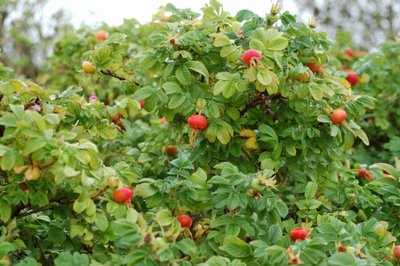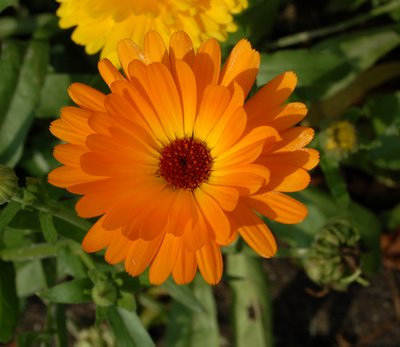
Rose hips/hyben are the orange , red, brown or black fruits of the rose. The most common wild rose in Denmark is Rosa rugosa, which came to country in the midst of the 1800s. It's growing by beaches and along the edges of roads. The fruits are eaten by fruit-eating birds such as trushes and waxwings, which then disperse the seed in their droppings.
Rose hip is very rich in C-vitamin, it's among the richest sources of any plant, it also has a good amount of A-vitamin and calcium.
The rose hips are good for jelly and marmelade, juice, tea, soup. Rosehips are also commonly used externedly in oil form to restore firmness to the skin by nourishing and astringing tissue.
It's the outer peel of the fruit that's used. The seeds are filled with itching powder.
In some pagan mythologies no undead or ghostly creatures (i.e. vampires) may cross the path of a wild rose. It was thought that to place a wild rose on a coffin of a recently deceased person would prevent them from rising again.
photo: grethe bachmann










